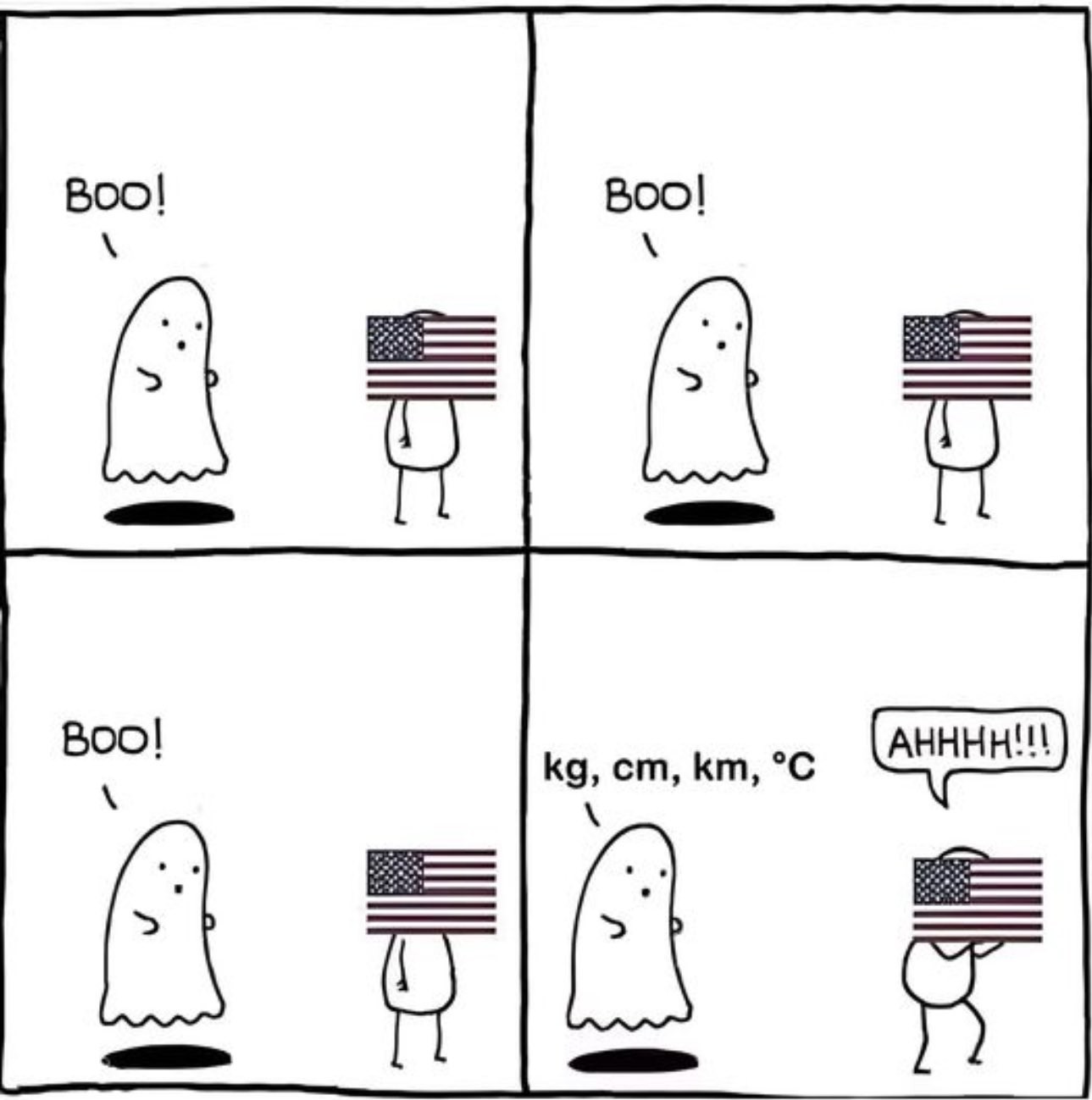this post was submitted on 29 Oct 2023
1116 points (95.4% liked)
Memes
49753 readers
1491 users here now
Rules:
- Be civil and nice.
- Try not to excessively repost, as a rule of thumb, wait at least 2 months to do it if you have to.
founded 6 years ago
MODERATORS
you are viewing a single comment's thread
view the rest of the comments
view the rest of the comments

100°F is roughly (like really roughly) the hottest temp your likely to see in most temperate climates throughout a year. 0°F is(again really roughly) the lowest. The result is you can use Fahrenheit basically as a percentage, or a 0 to 100 temperature score to help you decide how to dress/prepare for the day. If the temperature is above or below 100 or 0 then you need to consider fairly serious precautions before going outside for any length of time.
It's not a very precise system at all, and it obviously has no place in a laboratory or similar situation. But it does work quite well for communicating the weather to common people. There is very little desire among Americans to change to Celsius not because they don't understand it (we're all taught Celsius in grade school) but because Fahrenheit serves most people's needs perfectly adequately.
OP is also arguing that easily recalling the boiling temperature of water (one of the big purported advantages of Celsius) is useless for most people as nobody actually measures the temperature of water while boiling it. Except, maybe, in a classroom, probably while demonstrating to children how the Celsius scale works.
Knowing when water freezes is really useful though for places that ice/snow.